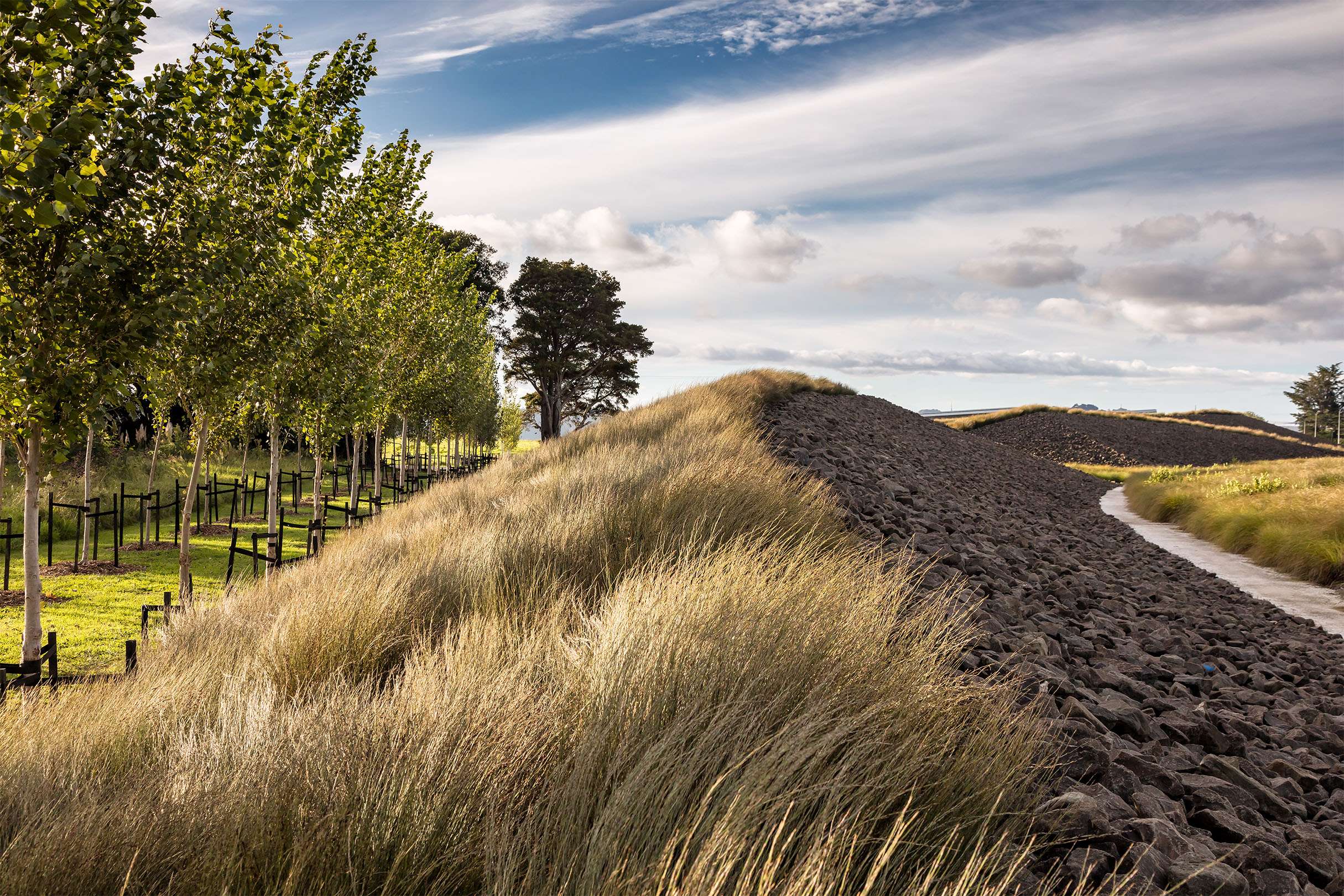
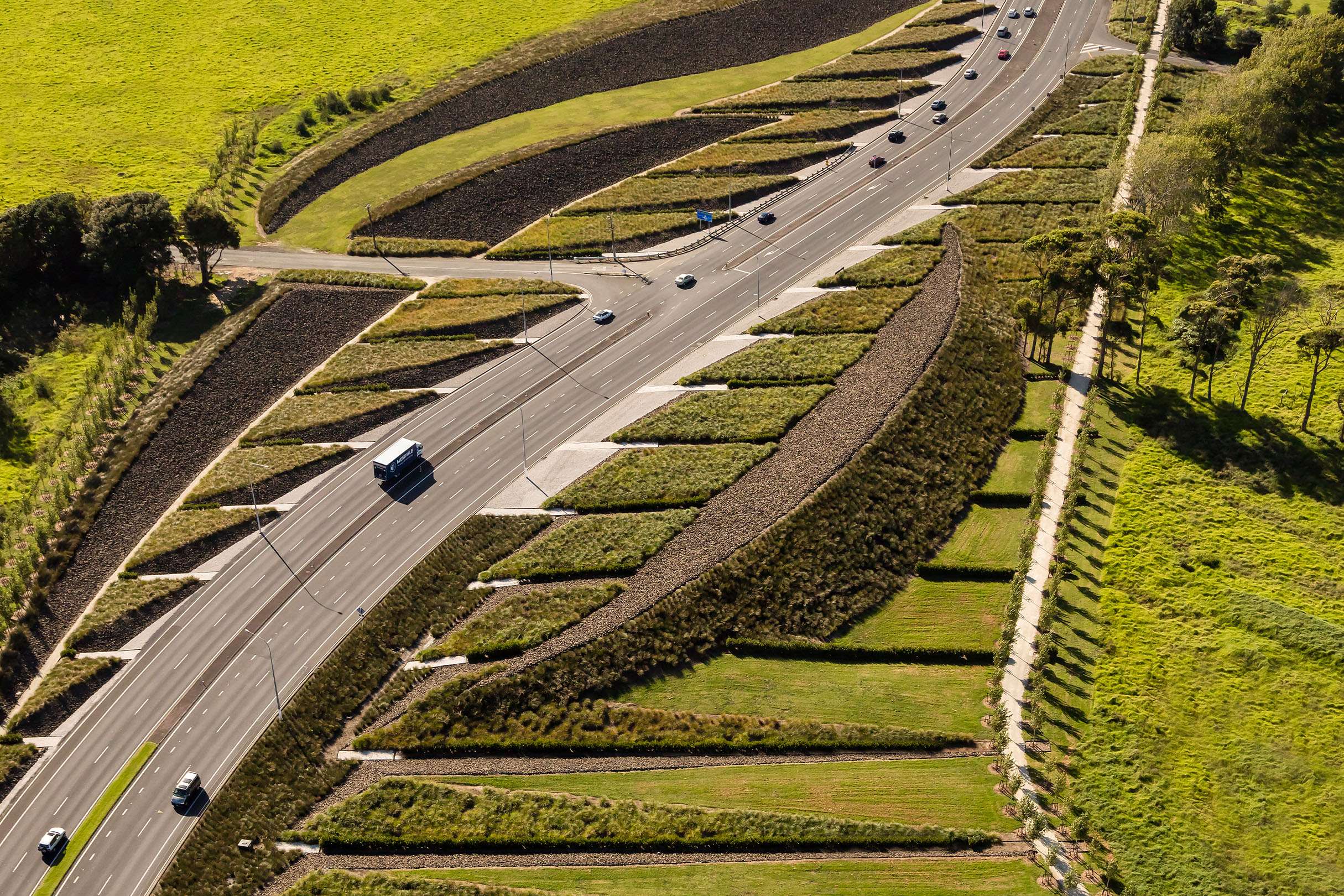
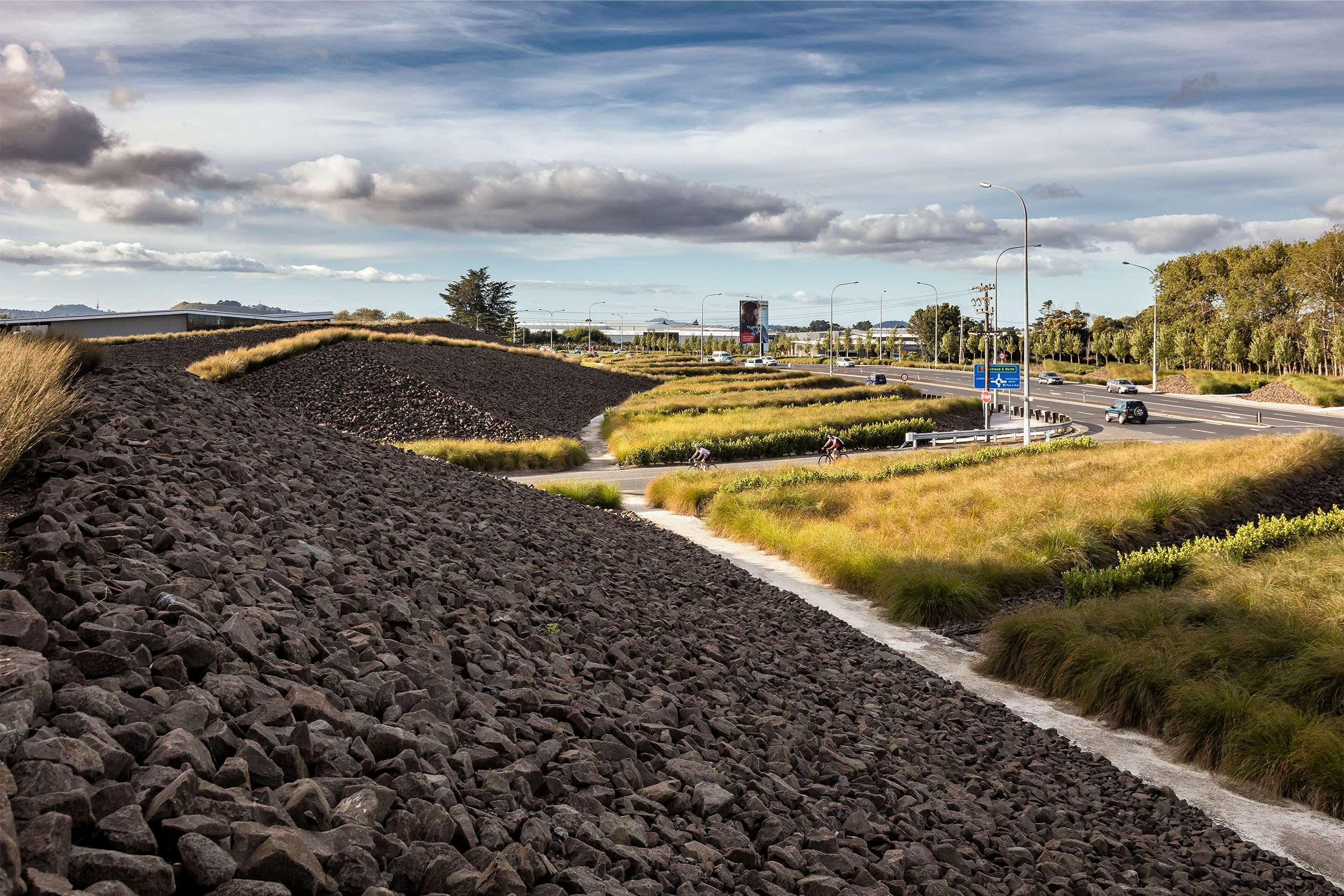
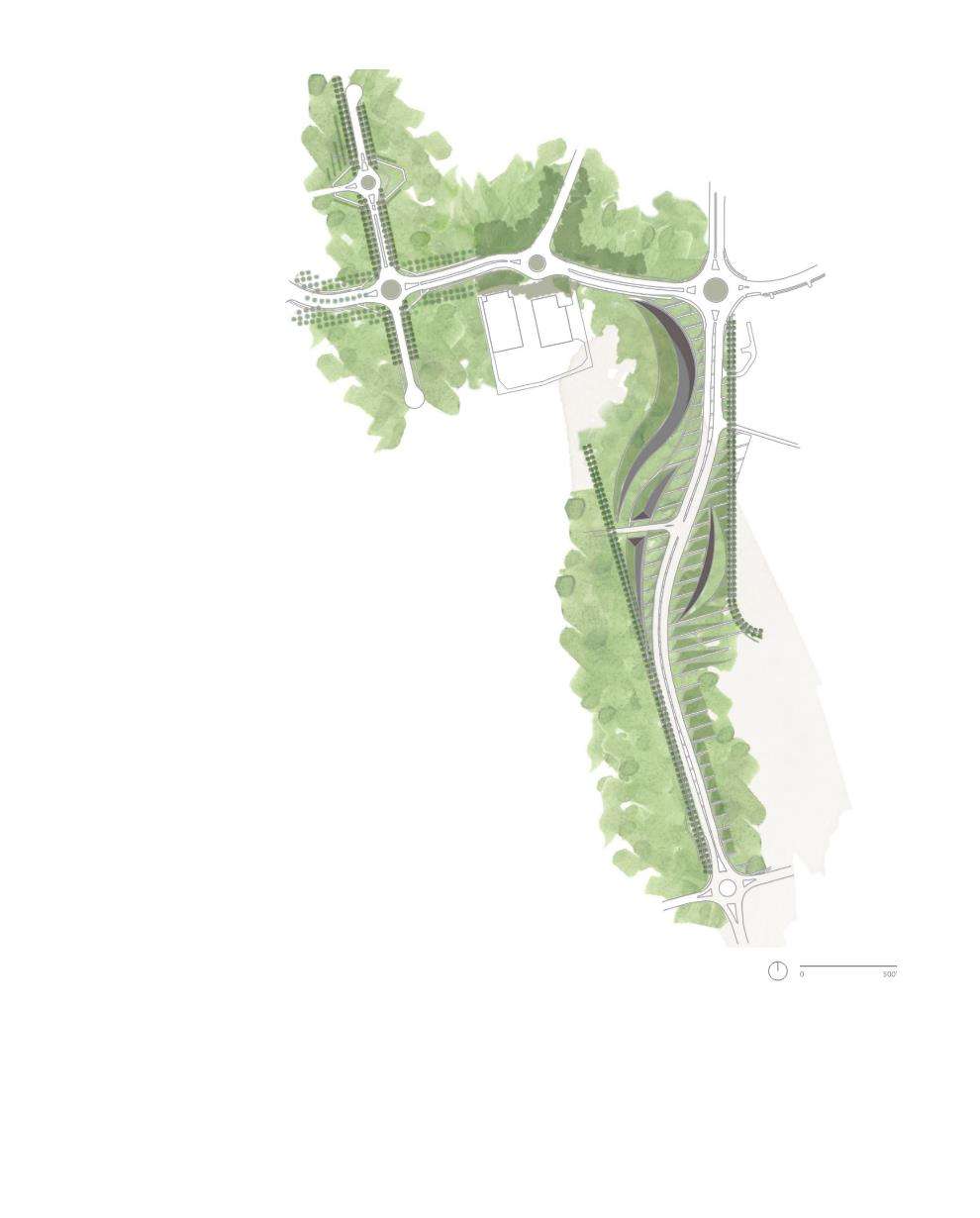
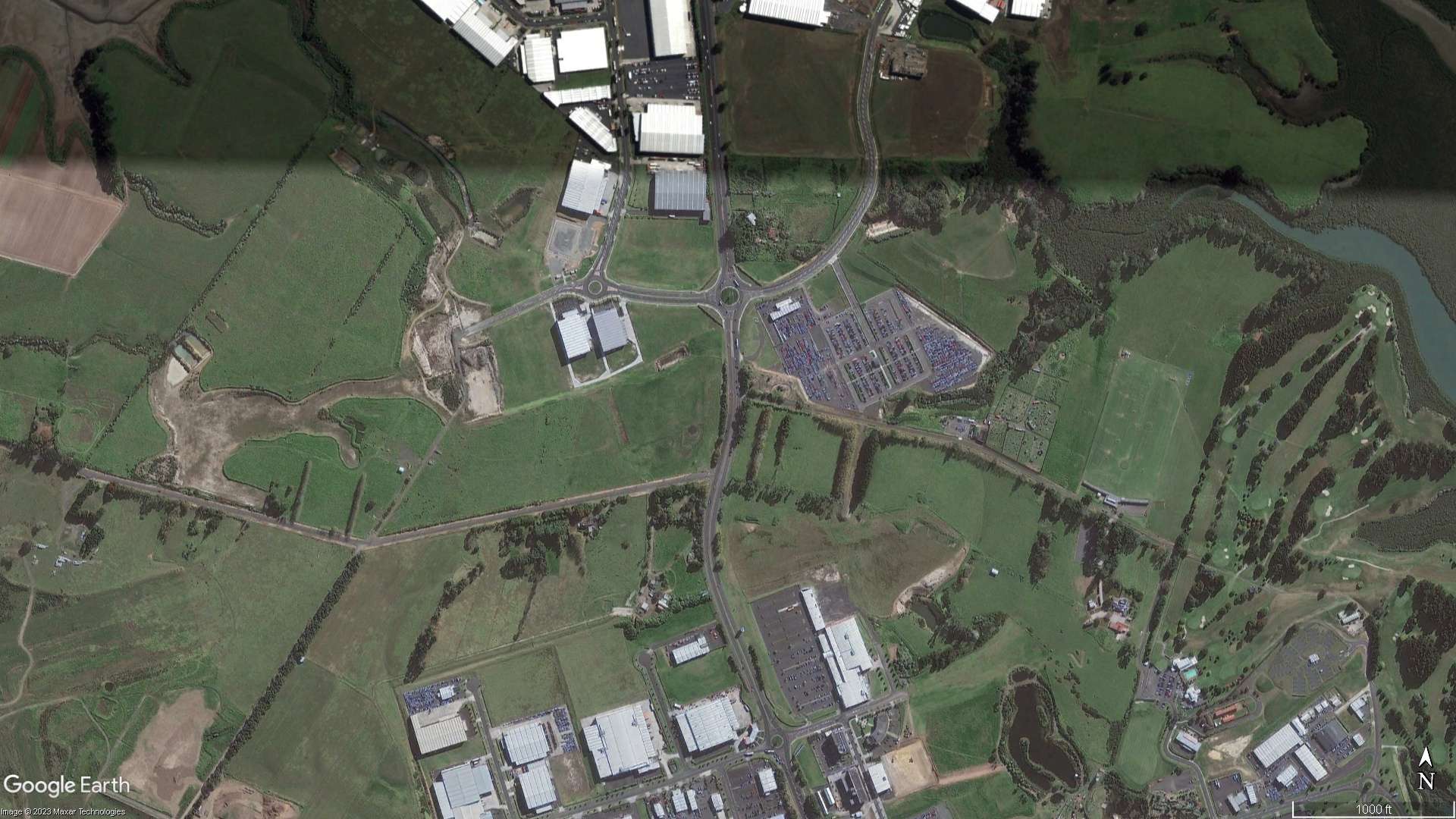
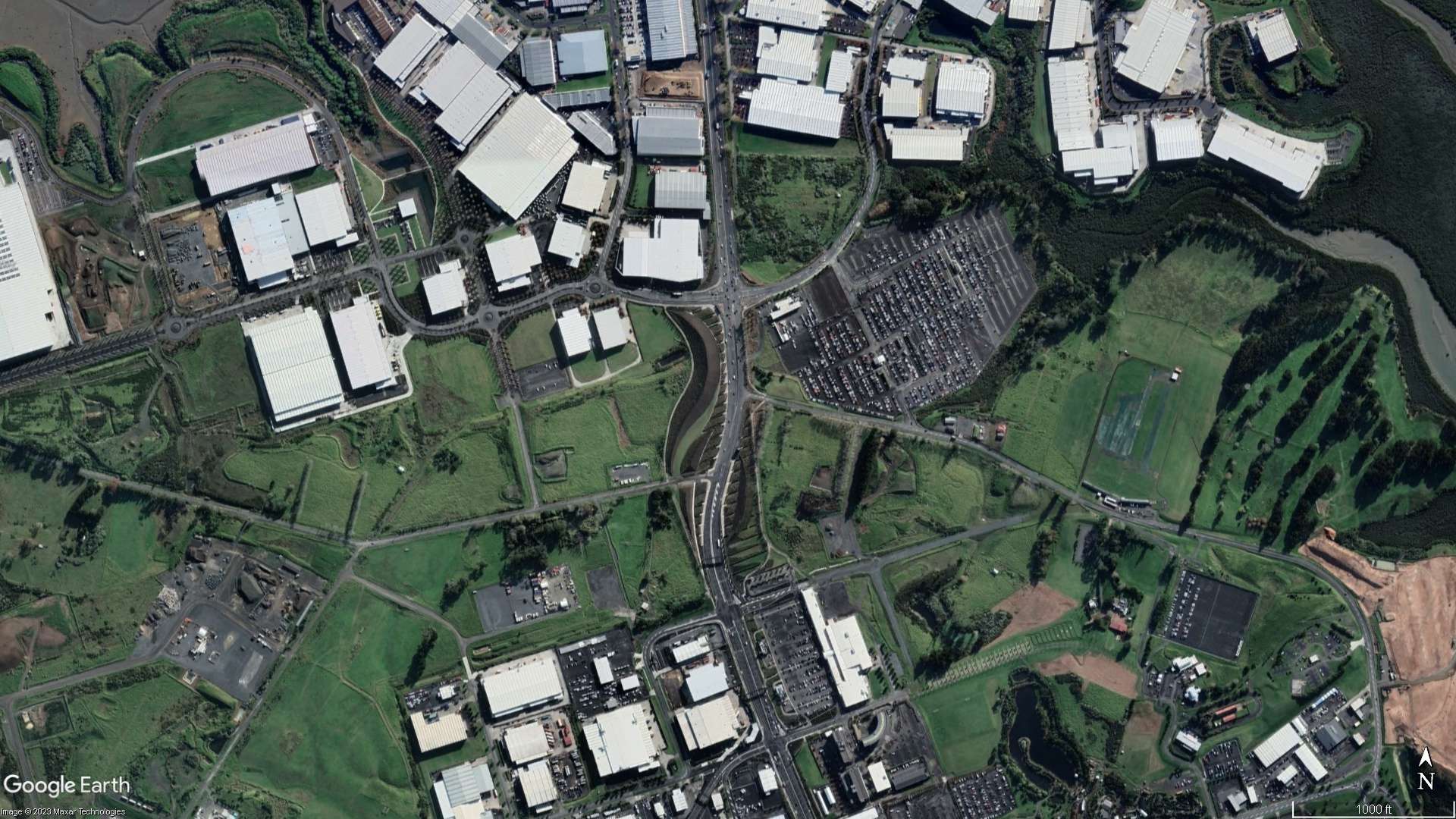
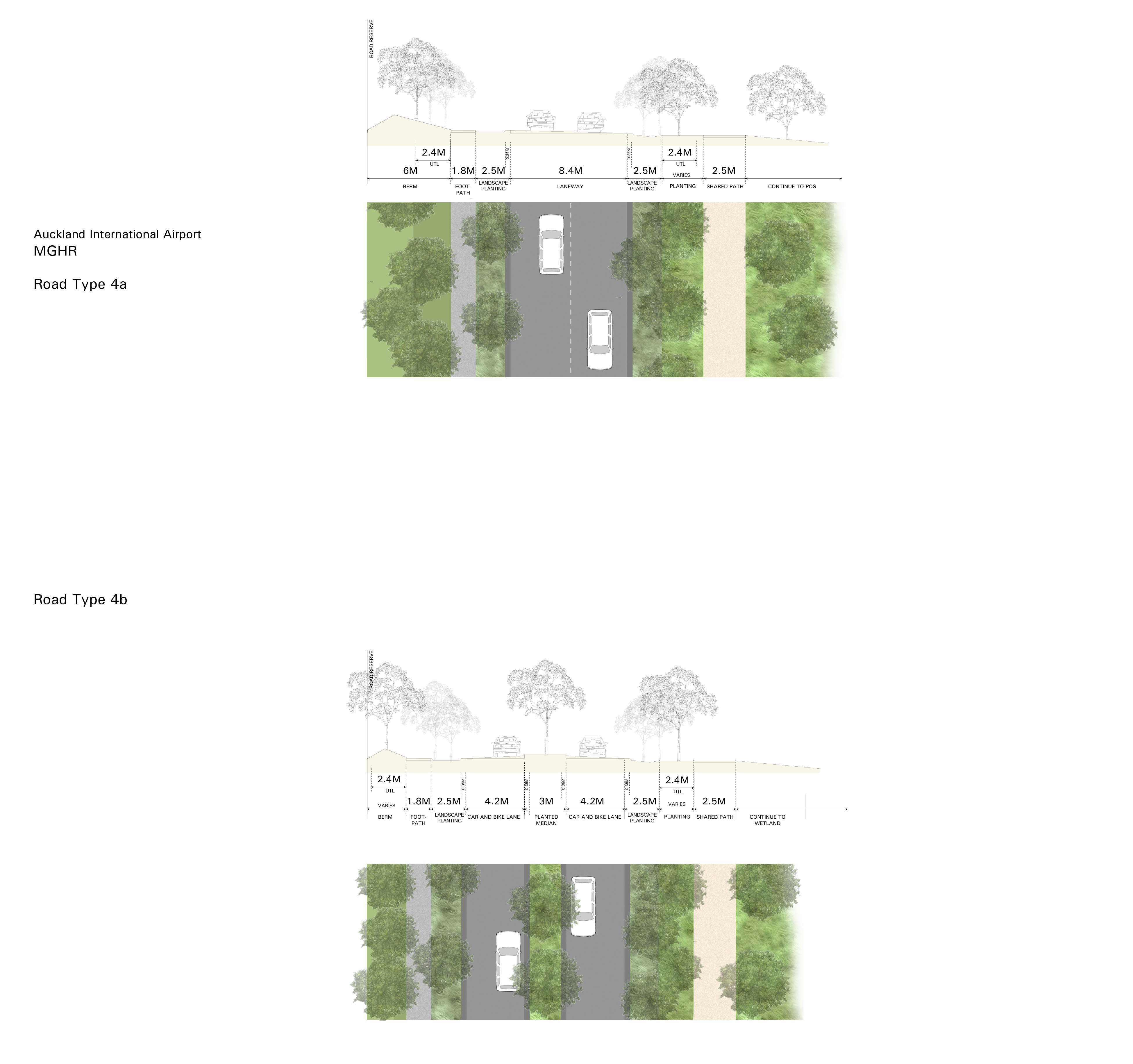

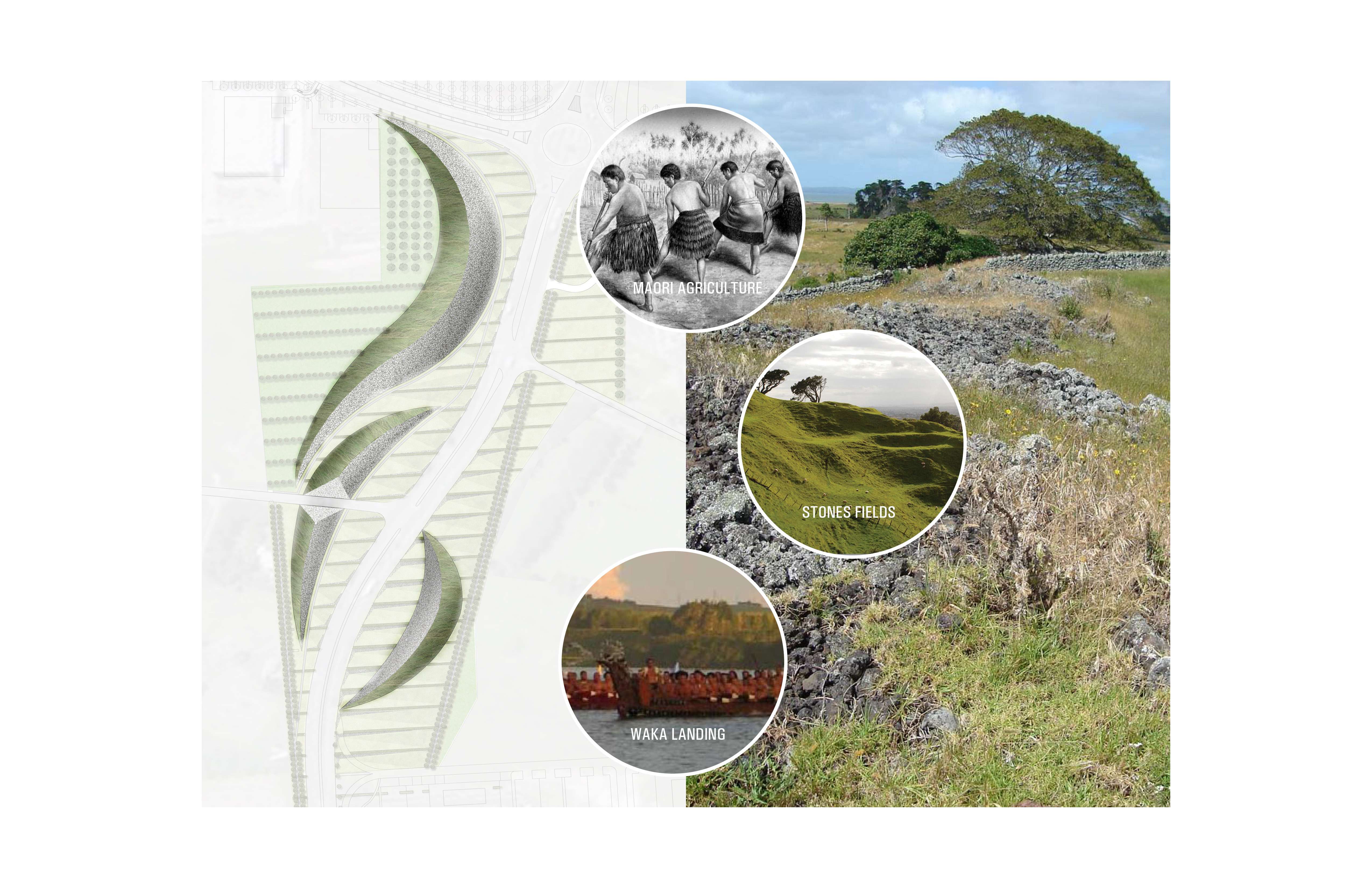
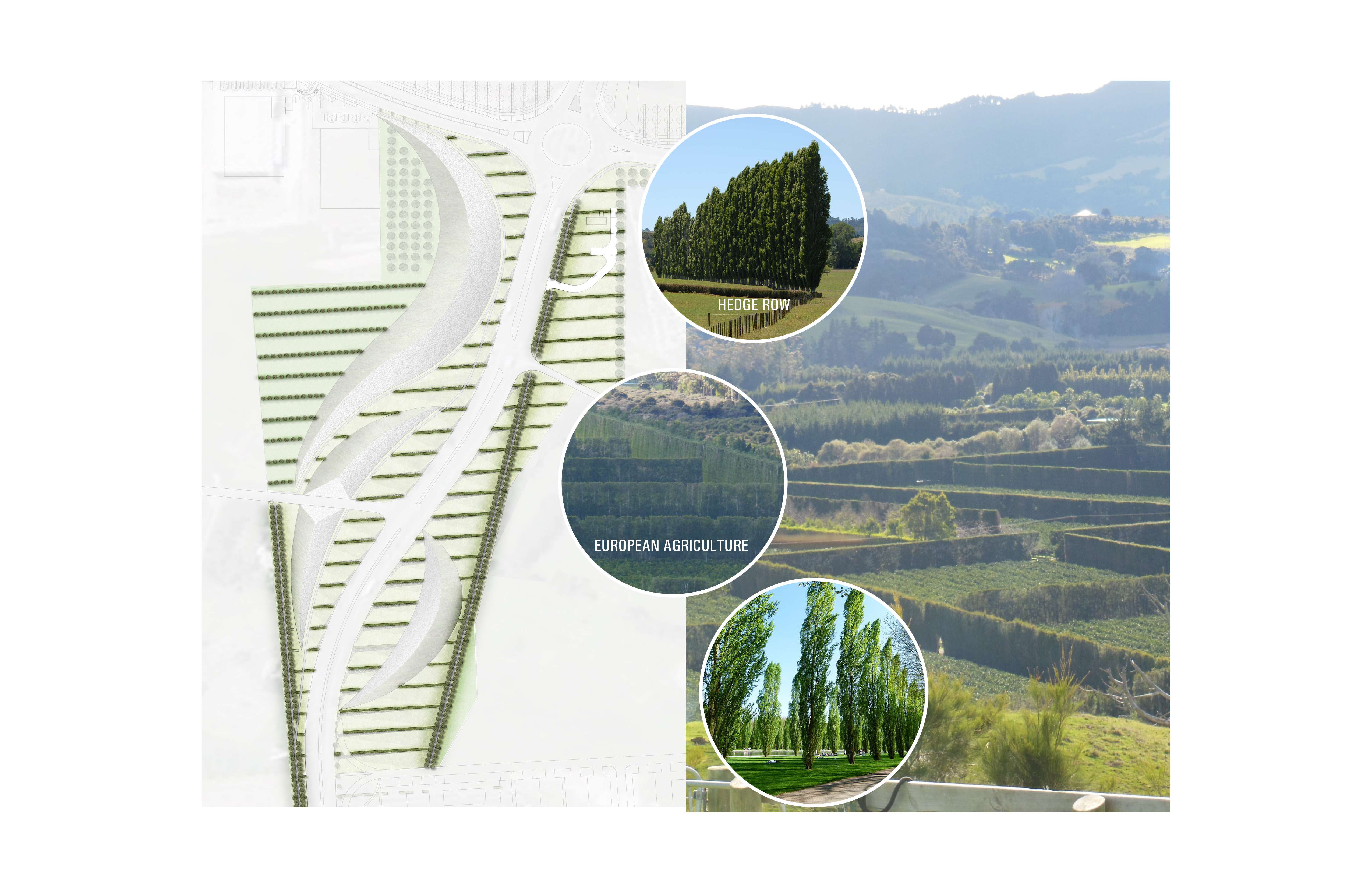
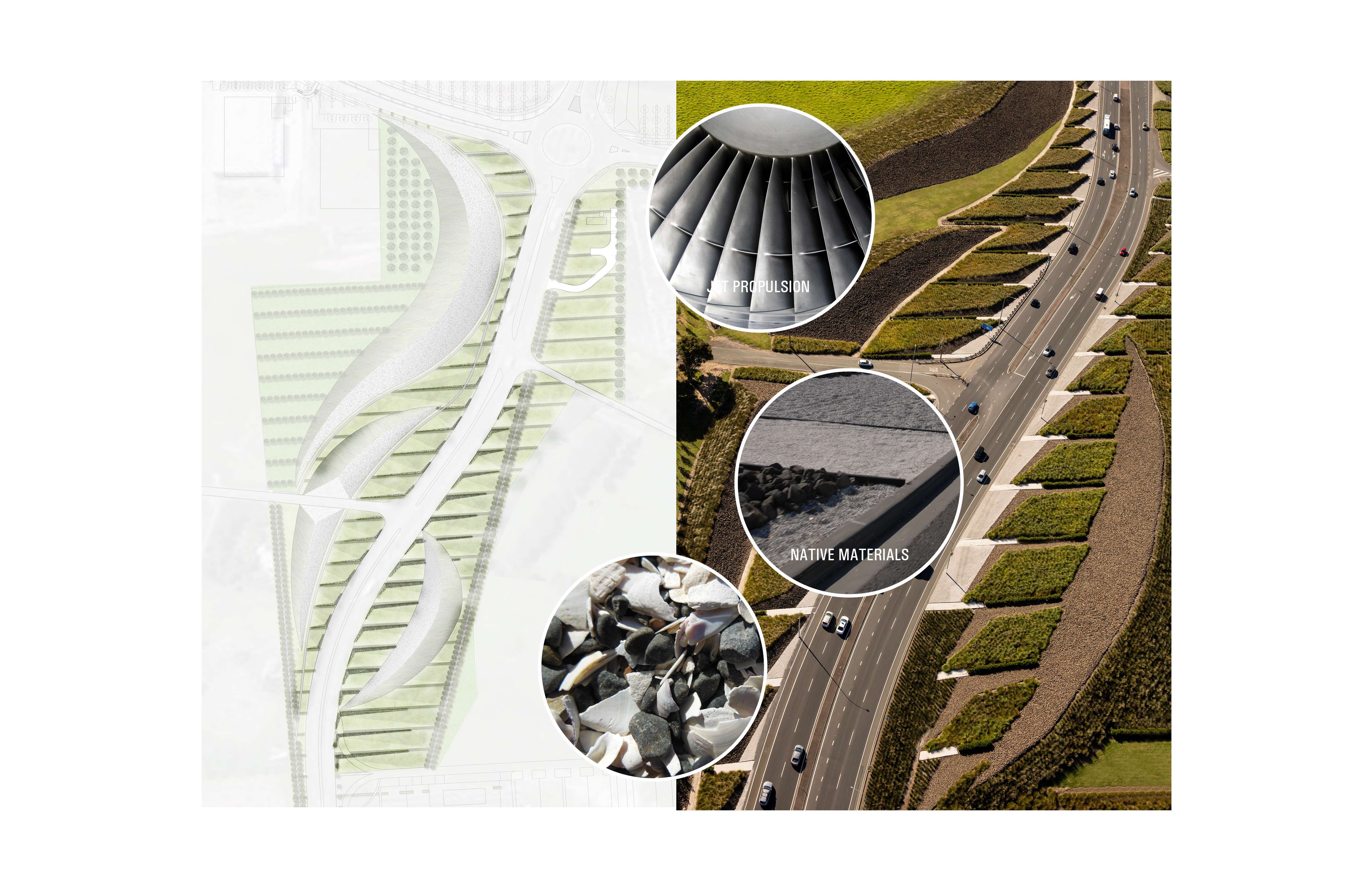
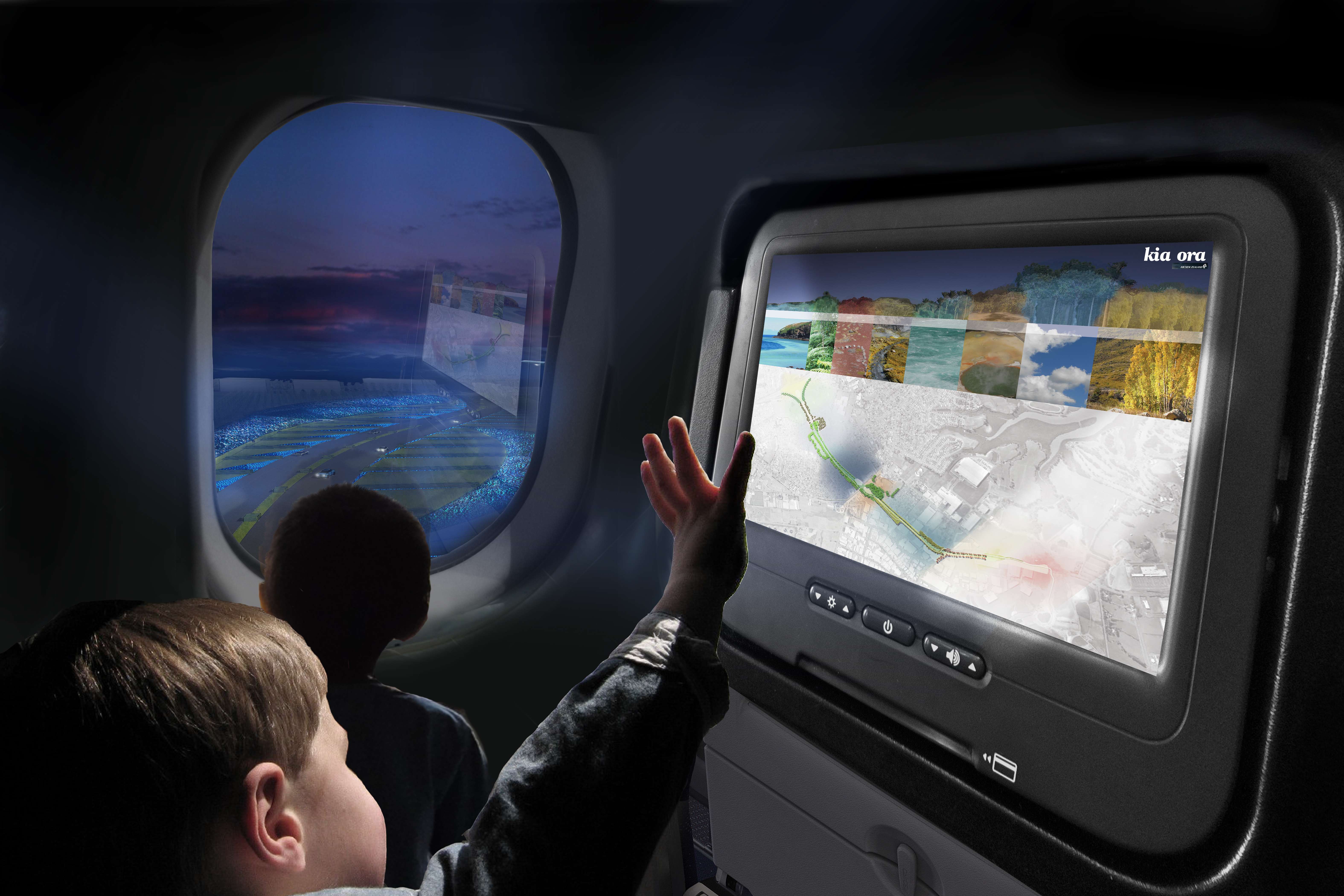
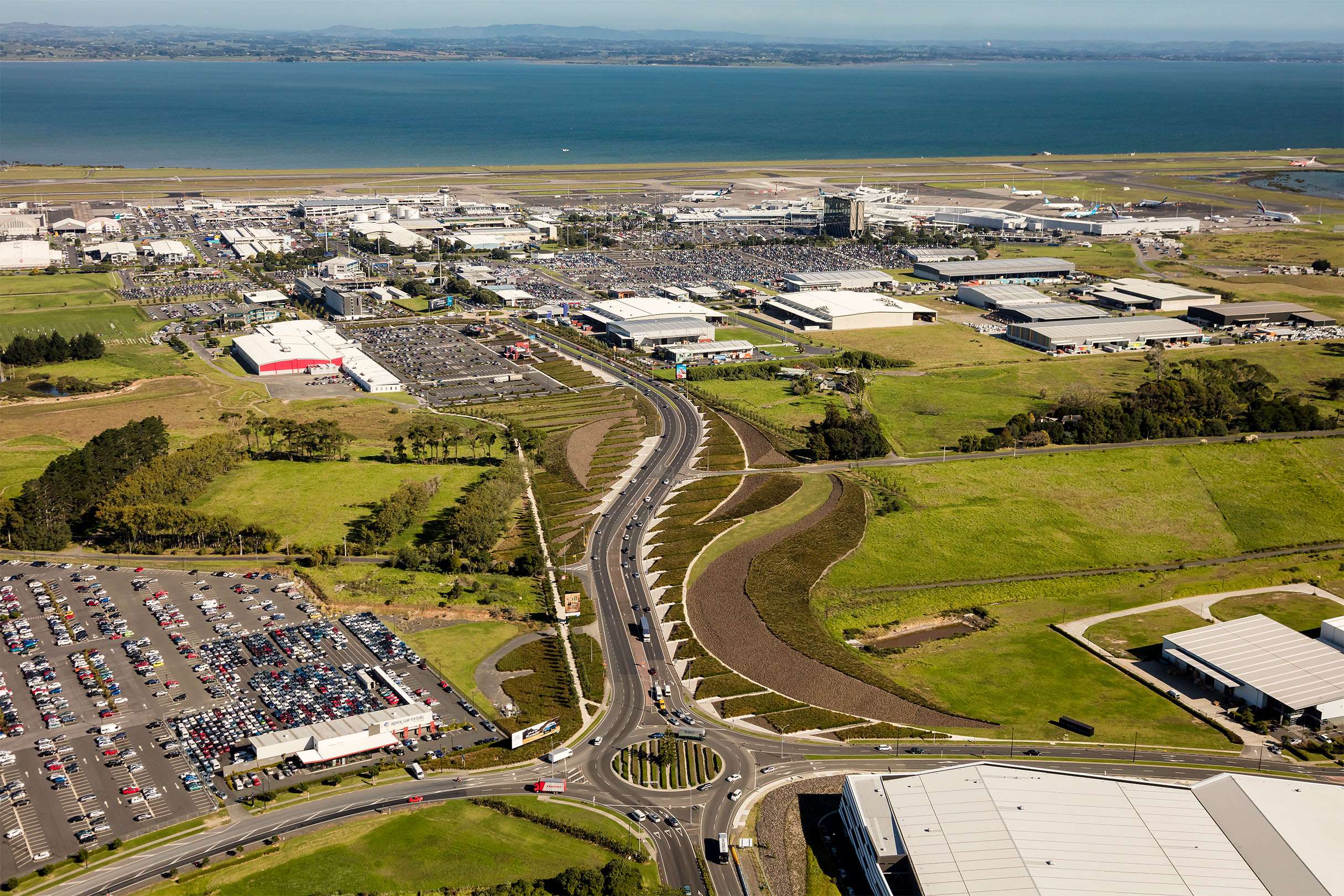
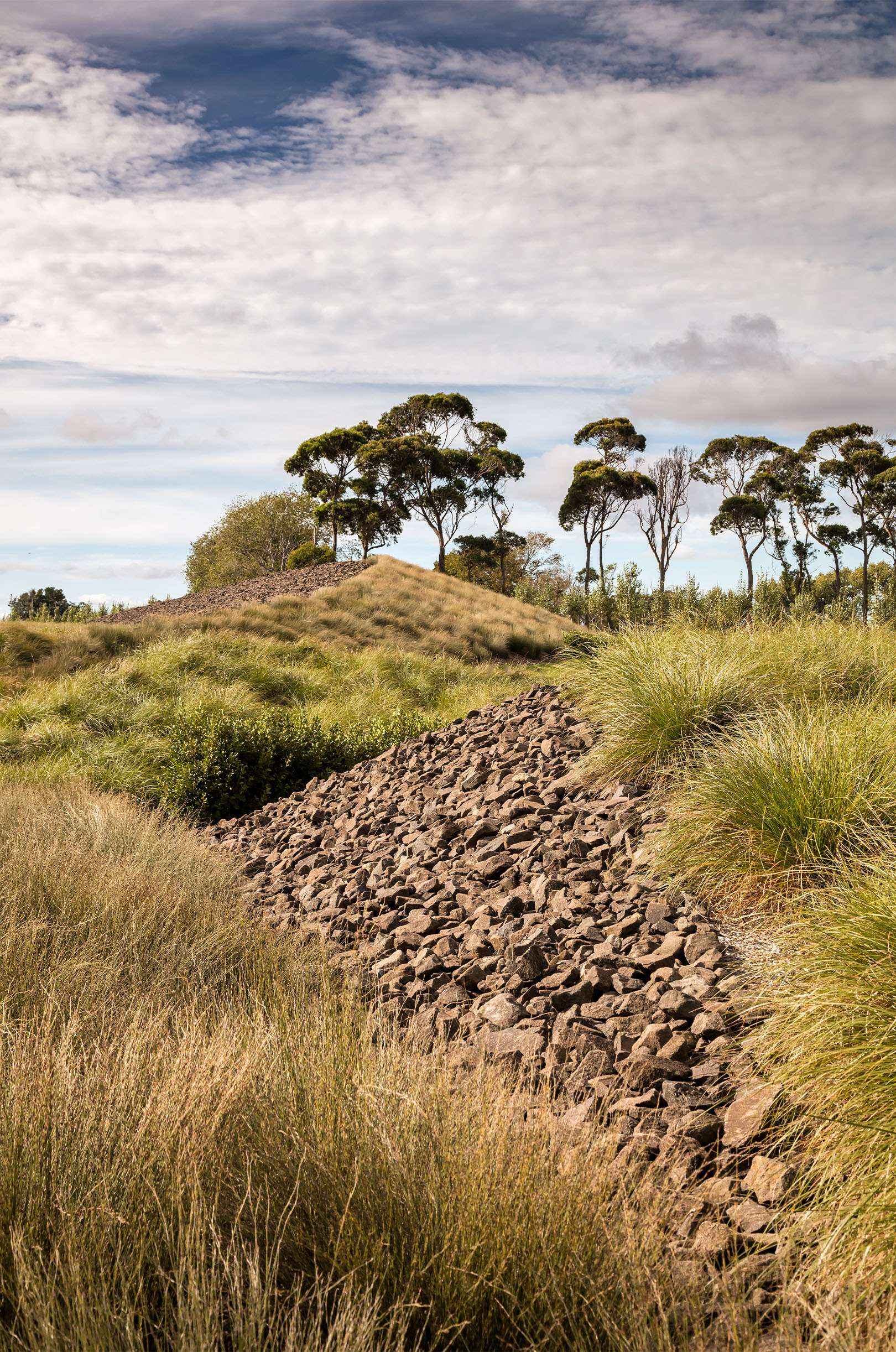
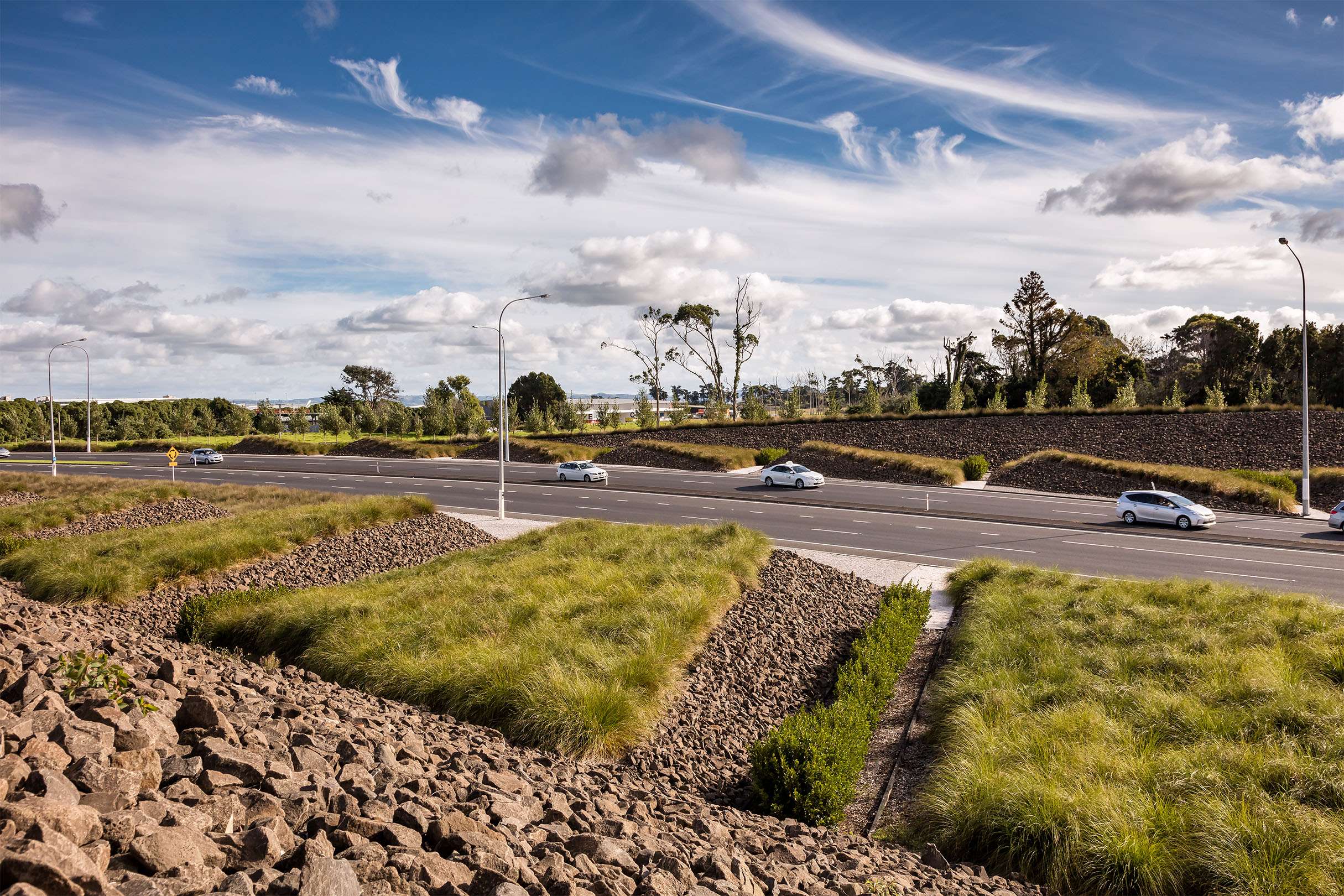
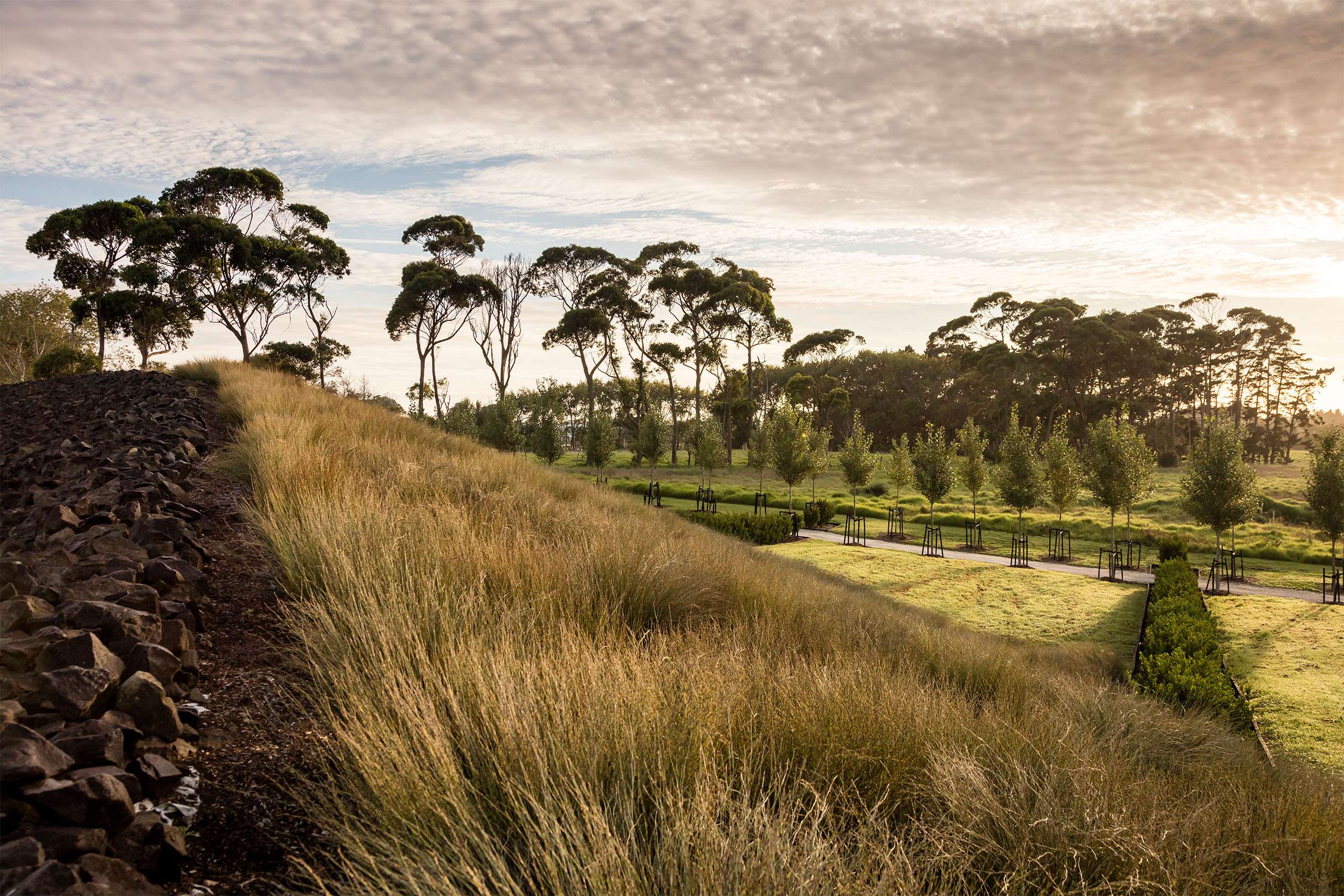
First (F)light
First (F)light
The Auckland International Airport has a dramatic geographical context, sited on an isthmus of the northern island of New Zealand. The seasons change in dramatic shifts— the east coast of New Zealand receives the first light of day in terms of global time. 70% of visitors to New Zealand arrive through the portal of the Auckland Airport, which has, over time, lost a unique national identity. The Auckland Airport landscape is a welcome to visitors, a recognition of the site’s location on the globe, and a celebration of how man has engaged with the uniquely dramatic New Zealand landscape.
The region is historically poignant— as it is the site where the Maori first arrived in waka canoes from Polynesia— transforming the landscape through the cultivation of tropical plants in stone-lined excavations. These stonesfields carved into the landscape and created sheltered, sun-warmed microclimates for cultivating the imported tropical plantings, and became a sacred typology. Centuries later, European immigrants further modified the landscape with cultivation of orchards and timber trees. Similar to the Maori, they protected the crops from the harsh New Zealand climate with layered plantings in strict hedgerows. Both the Maori and European settlers dramatically shaped the Auckland and broader New Zealand landscape.
The Auckland International Airport Landscape is an expression of the engagement of man and land, and celebrates the multiple histories of New Zealand’s vernacular landscape. Stone mounds reference Maori stonesfields, and rise from the ground, hugging the visitor. A datum of hedgerows overlays these mounds, creating a new simplified groundplane from which the greater Auckland landscape—both urban and volcanic—can be read with a newfound clarity. The earthforms serve a dual purpose as they address on-site soils remediation and stormwater treatment, part of a larger ecological mission of the airport. Smaller, stone ‘blades’ reference the motion of a jet engine, and emphasize the excitement of arrival, travel and cinematic choreography—of planes, cars, bicycles—through the airport landscape. Native New Zealand grasses soften the blades and connect them to the greater landscape.
International travelers to and from Auckland generally arrive in the dark. Leveraging the importance of light as part of the airport/travel experience in Auckland, the airport celebrates the New Zealand landscape in light. Dramatic colors are pulled from the dramatic New Zealand landscape, from Hukafalls to the volcanoes in Auckland, and projected on the stone blades—welcoming travelers to the landscape of the country as they arrive.
The gestures welcome the visitor to move through New Zealand’s landscape. The Auckland Airport landscape is to be experienced on many levels—for bikers on the National Bike trail which weaves through the site, for walkers, drivers and for passengers on descending and ascending aircraft. This gateway landscape connects the airport to the greater New Zealand ecology, history and culture, introducing travelers to the landscape of the country even from the sky above.
Auckland International Airport won the National ASLA Honor Award in 2021.
